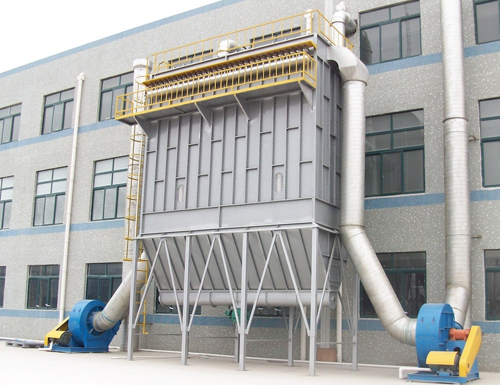The weight of the air consumption of the dust collector is generally called the cloth weight, which refers to the weight of the filter material with an area of 1m2 (g/m2). Since the material and structure of the filter material are directly reflected in its weight, the weight has become a basic and important indicator to determine the performance of the filter material. It is also an important factor in determining the price of filter media.
Thickness is also one of the important physical properties of the filter material, which has a great influence on the air permeability and wear resistance of the filter material. Boiler dust collector is a device that separates dust from flue gas. Boiler dust collector is a commonly used supporting equipment in boiler and industrial production. Its function is to remove the particulate smoke from the boiler fuel and combustion exhaust gas, thereby greatly reducing the amount of smoke and dust discharged into the atmosphere. It is an important environmental protection equipment to improve environmental pollution and air quality. The bag filter is a dry dust filter device. It is suitable for capturing fine, dry, non-fibrous dust. The filter bag is made of woven filter cloth or non-woven felt, and uses the filtering effect of fiber fabric to filter the dust-laden gas. The action settles down and falls into the ash hopper. When the gas containing finer dust passes through the filter material, the dust is blocked and the gas is purified. The equipment that separates dust from flue gas is called dust collector or dust removal equipment. The performance of the dust collector is expressed in terms of the amount of gas that can be handled, the resistance loss when the gas passes through the dust collector, and the dust removal efficiency. At the same time, the price, operation and maintenance costs, service life and difficulty of operation and management of the dust collector are also important factors to consider its performance. Dust collectors are commonly used facilities in boilers and industrial production. For woven fabrics, thickness generally depends on weight, yarn thickness and weaving method. For felt and non-woven fabrics, thickness depends only on weight and manufacturing process.
The density of the woven fabric is expressed by the number of yarns per unit distance, that is, the number of warp and weft between 1 inch (2.54cm) or 5cm, while the density of the felt and non-woven fabric is expressed by the bulk density. The air volume is calculated by dividing the weight per unit area of the filter material by the thickness (g/m3). The bag filter is a dry dust filter device. It is suitable for capturing fine, dry, non-fibrous dust. The filter bag is made of woven filter cloth or non-woven felt, and uses the filtering effect of fiber fabric to filter the dust-laden gas. The action settles down and falls into the ash hopper. When the gas containing finer dust passes through the filter material, the dust is blocked and the gas is purified.
Temperature resistance and heat resistance are important factors in selecting filter media. When selecting the filter material, not only the temperature resistance of the filter material, that is, the long-term working temperature of the filter material and the high temperature that may occur in the short term, but also the heat resistance of the filter material should be considered. That is, the ability of the filter material to resist dry heat and damp heat. After treatment, the temperature resistance of the filter material will be improved.
Post time: Jan-18-2022


